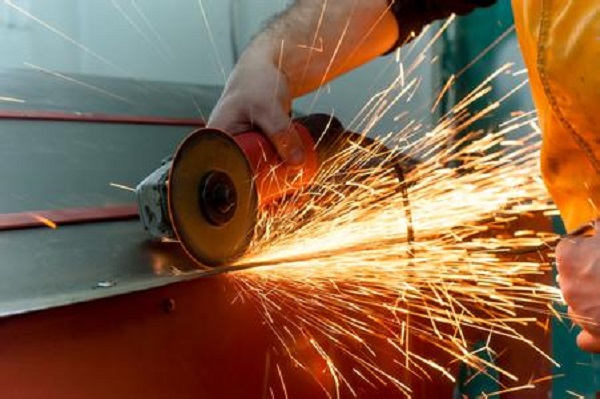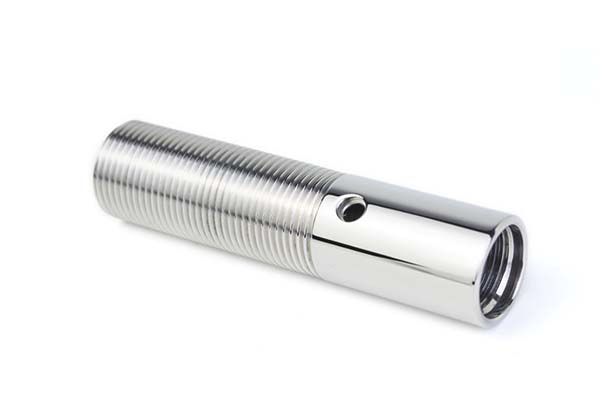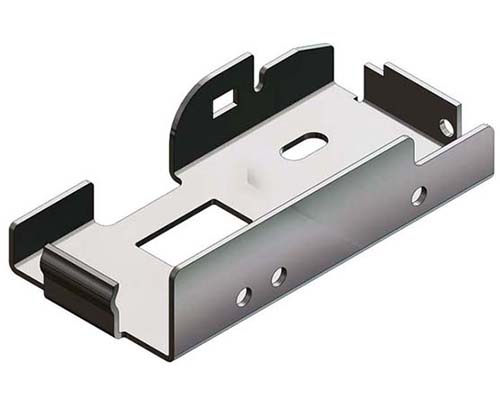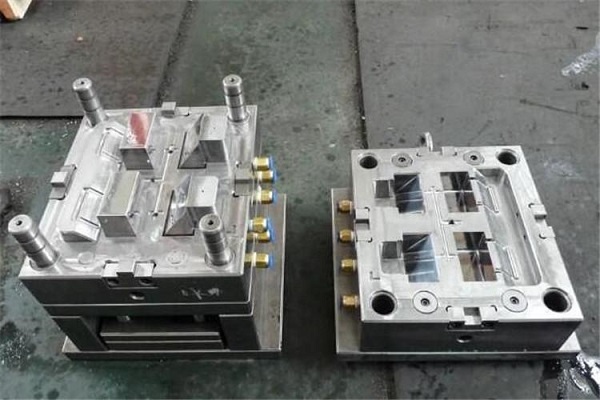If you’ve ever wondered what metal fabrication engineering is and why it matters, let’s cut to the chase: it’s the specialized field that turns raw metal into functional, custom-made parts and structures—from the steel beams in skyscrapers to the precision components in medical devices. Unlike basic metalworking, which focuses on simple cutting or bending, metal fabrication engineering combines design, material science, and advanced manufacturing techniques to solve complex industrial problems. Whether you’re a manufacturer needing a custom machine frame or a construction firm requiring structural supports, this discipline ensures the end product is safe, durable, and tailored to your exact needs.
Core Definition: What Sets Metal Fabrication Engineering Apart?
At its core, metal fabrication engineering is the systematic process of designing, prototyping, and producing metal products by manipulating raw metals (like steel, aluminum, or titanium) through techniques such as cutting, bending, welding, and assembling. What makes it “engineering” (rather than just “fabrication”) is the emphasis on technical expertise: professionals in this field must understand material properties, structural integrity, and industry standards to avoid failures (e.g., a poorly welded bracket collapsing under load).
A real-world example illustrates this distinction: A few years ago, a food processing client approached our team needing a custom conveyor system frame. Basic fabricators might have simply cut and welded steel tubes to size, but our engineering team first analyzed the frame’s load capacity (it needed to support 500 lbs of equipment plus daily vibration) and the client’s sanitization requirements (stainless steel was necessary to resist corrosion from cleaning chemicals). We created 3D models to test stress points, adjusted the design to add reinforcement brackets, and selected a welding process that ensured smooth, easy-to-clean joints. The result? A frame that lasted 10+ years without maintenance—something basic fabrication couldn’t have delivered.
Key Processes in Metal Fabrication Engineering
Metal fabrication engineering relies on a sequence of interconnected processes, each requiring precision and technical know-how. Below is a breakdown of the most critical steps, along with practical insights from industry experience:
1. Design and Prototyping
Before any metal is cut, engineers use computer-aided design (CAD) software (e.g., AutoCAD, SolidWorks) to create detailed 3D models. This step isn’t just about aesthetics—it’s about simulating how the part will perform in real conditions. For example, when designing a bracket for an aerospace component, we use finite element analysis (FEA) to test if the part can withstand extreme temperatures (-60°C to 150°C) and vibration without deforming.
Prototyping follows design: We often 3D-print a plastic or metal prototype to check fit and function. A recent client in the automotive industry wanted a custom exhaust manifold bracket; our prototype revealed a small gap between the bracket and the manifold, which we fixed in the CAD model before full production—saving the client $10,000 in rework costs.
2. Cutting and Shaping
Once the design is finalized, raw metal is cut into precise shapes using techniques like laser cutting, plasma cutting, or waterjet cutting. The choice of method depends on the metal’s thickness and type:
- Laser cutting: Ideal for thin metals (up to 1 inch thick) and requires minimal post-processing (e.g., cutting aluminum sheets for electronics enclosures).
- Plasma cutting: Better for thick metals (1–6 inches thick), such as steel plates for construction beams.
- Waterjet cutting: Used for heat-sensitive metals (like titanium) because it doesn’t generate heat that could warp the material.
After cutting, metals are shaped using bending (with press brakes) or rolling (for curved parts like pipes). A key tip from our team: Always account for “springback”—the tendency of metal to return to its original shape after bending. For example, when bending 16-gauge steel, we over-bend by 2–3 degrees to achieve the exact angle needed.
3. Welding and Assembly
Welding is the process of joining metal parts using heat, and it’s one of the most critical steps in fabrication engineering. The wrong welding method can lead to weak joints or even catastrophic failure. Below is a comparison of common welding techniques:
| Welding Technique | Best For | Advantages | Disadvantages |
| MIG Welding | Thick metals (steel, aluminum) | Fast, easy to learn | Not ideal for thin metals |
| TIG Welding | Thin metals (titanium, stainless steel) | Precise, high-quality joints | Slow, requires skilled operators |
| Arc Welding | Heavy-duty steel (construction, mining) | Low cost, works outdoors | Creates spatter (needs cleanup) |
After welding, parts are assembled into the final product. This often involves adding fasteners (bolts, screws) or finishing touches like grinding (to smooth rough edges) or painting (to prevent corrosion). For a recent project building steel storage tanks, we used TIG welding for the tank seams (to avoid leaks) and added a zinc coating (galvanization) to protect against rust—extending the tank’s lifespan from 5 years to 20 years.
Essential Materials in Metal Fabrication Engineering
The choice of metal defines a product’s strength, weight, and cost. Below are the most commonly used materials, along with their applications and key considerations:
1. Steel
Steel is the workhorse of metal fabrication, thanks to its high strength and low cost. There are two main types:
- Carbon steel: Contains 0.05–2.0% carbon; used for structural parts (beams, frames) and machinery components. A fun fact: Carbon steel makes up 75% of all steel produced globally (source: World Steel Association).
- Stainless steel: Contains chromium (at least 10.5%) to resist corrosion; ideal for food processing equipment, medical tools, and outdoor structures. For example, we used 304 stainless steel for a client’s restaurant kitchen hood—its resistance to grease and moisture prevented rusting, even with daily cleaning.
2. Aluminum
Aluminum is lightweight (1/3 the weight of steel) and corrosion-resistant, making it perfect for aerospace, automotive, and consumer goods. However, it’s softer than steel, so it requires special welding techniques (like TIG welding) to avoid cracking. A recent project: We fabricated aluminum frames for a drone manufacturer—using 6061 aluminum (a high-strength alloy) to keep the drone light while supporting its camera and battery.
3. Titanium
Titanium is strong, lightweight, and biocompatible (safe for use in the human body), but it’s expensive (about \(30 per pound, compared to \)0.50 per pound for carbon steel). It’s used in high-end applications like aerospace components (jet engine parts) and medical implants (hip replacements). Our team once worked on a titanium bone plate for a orthopedic client—we had to use waterjet cutting to avoid heat damage and TIG welding with pure argon gas to prevent contamination.
Industry Applications: Where Metal Fabrication Engineering Makes an Impact
Metal fabrication engineering is everywhere—you just might not see it. Here are three key industries where it plays a critical role:
1. Construction
From skyscrapers to bridges, construction relies on fabricated steel structures. For example, the Burj Khalifa (the tallest building in the world) uses over 330,000 tons of fabricated steel in its frame (source: Emaar Properties). Our team has worked on smaller-scale projects, too—like fabricating steel trusses for a shopping mall roof. We had to calculate the trusses’ load capacity to support snow (in winter) and HVAC equipment, ensuring the roof was safe for 50+ years.
2. Aerospace and Defense
Aerospace requires precision and durability—even a tiny flaw in a metal part can cause a disaster. Metal fabrication engineers here work on parts like jet engine casings, wing spars, and missile components. One challenge we faced: Fabricating a titanium fuel line for a military jet. The line had to bend at a 45-degree angle without cracking, so we used a specialized bending process (rotary draw bending) and tested the line at 5,000 psi (twice the normal operating pressure) to ensure it didn’t leak.
3. Medical Devices
Medical devices need to be biocompatible (no toxic reactions in the body) and easy to sterilize. Fabricated metal parts here include surgical tools, implantable devices (like pacemaker casings), and hospital equipment (like MRI machine frames). For a client making surgical scalpels, we used 440C stainless steel (a high-hardness alloy) and added a sharpened edge using a precision grinding process. We also tested the scalpels for corrosion resistance—they had to withstand autoclaving (high-pressure steam cleaning) 1,000+ times without rusting.
Challenges and Solutions in Metal Fabrication Engineering
Even experienced engineers face challenges—here are three common ones and how to solve them:
1. Material Waste
Cutting raw metal often leaves scrap, which increases costs. For example, a client once ordered 100 steel brackets, but our initial cutting plan would have generated 20% scrap (wasting \(500 in material). To fix this, we used nesting software—programs that arrange parts on a metal sheet to minimize gaps. The revised plan reduced scrap to 5%, saving the client \)375.
2. Precision Errors
Small mistakes (e.g., a 1mm error in a hole’s position) can render a part useless. We avoid this by using computer numerical control (CNC) machines—these automated tools follow CAD designs with accuracy up to 0.001 inches. For a project making aluminum gears, we used a CNC mill to drill holes and cut teeth; every gear was identical, so they fit perfectly with the client’s machinery.
3. Welding Defects
Welds can have flaws like cracks or porosity (tiny holes), which weaken joints. Our solution: Train welders to follow AWS (American Welding Society) standards and use non-destructive testing (NDT) methods like X-rays or ultrasonic testing to check welds. For a client’s steel pressure vessel, we X-rayed every weld—we found one small crack, repaired it, and the vessel passed its pressure test with flying colors.
Future Trends in Metal Fabrication Engineering
The industry is evolving fast—here are three trends to watch:
1. Automation and Robotics
More fabricators are using robots for repetitive tasks like welding or cutting. For example, a robotic welding arm can work 24/7 without fatigue, reducing errors and increasing productivity. Our team recently added a robotic laser cutter to our shop—it can cut 500 parts per day, compared to 200 parts per day with a manual cutter.
2. Additive Manufacturing (3D Printing)
3D printing (or metal additive manufacturing) is changing how we make complex parts. Instead of cutting metal from a sheet, 3D printers build parts layer by layer using metal powder. This is ideal for parts with intricate shapes (like aerospace engine components) that are hard to make with traditional methods. We used 3D printing to make a custom aluminum bracket for a drone client—the bracket had a hollow interior (to save weight) that would have been impossible to create with laser cutting.
3. Sustainable Practices
As industries focus on sustainability, fabricators are reducing waste and using eco-friendly materials. For example, we now recycle 90% of our metal scrap (selling it to mills to make new metal) and use waterjet cutting (which uses recycled water) instead of plasma cutting (which generates fumes) for certain projects. A client in the green energy sector even asked us to use recycled steel for their solar panel frames—we sourced the steel from a local mill, reducing the project’s carbon footprint by 30%.
Yigu Technology’s Perspective on Metal Fabrication Engineering
At Yigu Technology, we believe metal fabrication engineering is the backbone of innovation—without it, industries like aerospace, medical, and construction couldn’t bring life-saving or world-changing products to market. What sets successful fabrication projects apart is the balance between technical precision and customer focus: it’s not enough to make a part that’s strong—you need to make it right for the client’s unique needs. Over the years, we’ve learned that investing in advanced tools (like CNC machines and 3D printers) and skilled engineers isn’t just a cost—it’s a way to deliver value that basic fabricators can’t match. As the industry moves toward automation and sustainability, we’re committed to staying ahead of the curve, so we can help our clients build products that are safer, more durable, and better for the planet.
FAQ: Common Questions About Metal Fabrication Engineering
- How long does a typical metal fabrication engineering project take?
It depends on the complexity: A simple bracket might take 1–2 weeks (design + production), while a large structural project (like a steel frame for a building) could take 2–6 months. Factors like material availability and testing requirements also affect timelines.
- What’s the difference between metal fabrication engineering and machining?
Machining removes material from a solid metal block (e.g., drilling a hole in a steel bar), while fabrication builds parts by joining or shaping multiple metal pieces (e.g., welding two steel tubes to make a frame). Fabrication is better for large or custom structures, while machining is ideal for small, precise parts.
- How much does metal fabrication engineering cost?
Costs vary by material and complexity: A simple steel bracket might cost \(50–\)200, while a custom titanium aerospace part could cost \(1,000–\)10,000. To reduce costs, work with engineers early in the design phase—they can suggest material swaps (e.g., aluminum instead of titanium) or design changes to simplify production.
- What certifications should a metal fabrication engineer have?
Look for certifications like AWS Certified Welding Engineer (CWE) (for welding expertise) or SolidWorks Certified Professional (for design skills). For companies, certifications like ISO 9001 (quality management) ensure consistent, high-quality work.
- Can metal fabrication engineering be used for small-scale projects (e.g., custom furniture)?
Absolutely! While many people associate fabrication with large industrial projects, it’s also great for custom items like steel tables, outdoor grills, or bike frames. Engineers can design parts that are both functional and aesthetically pleasing, using materials like stainless steel or aluminum for durability.







